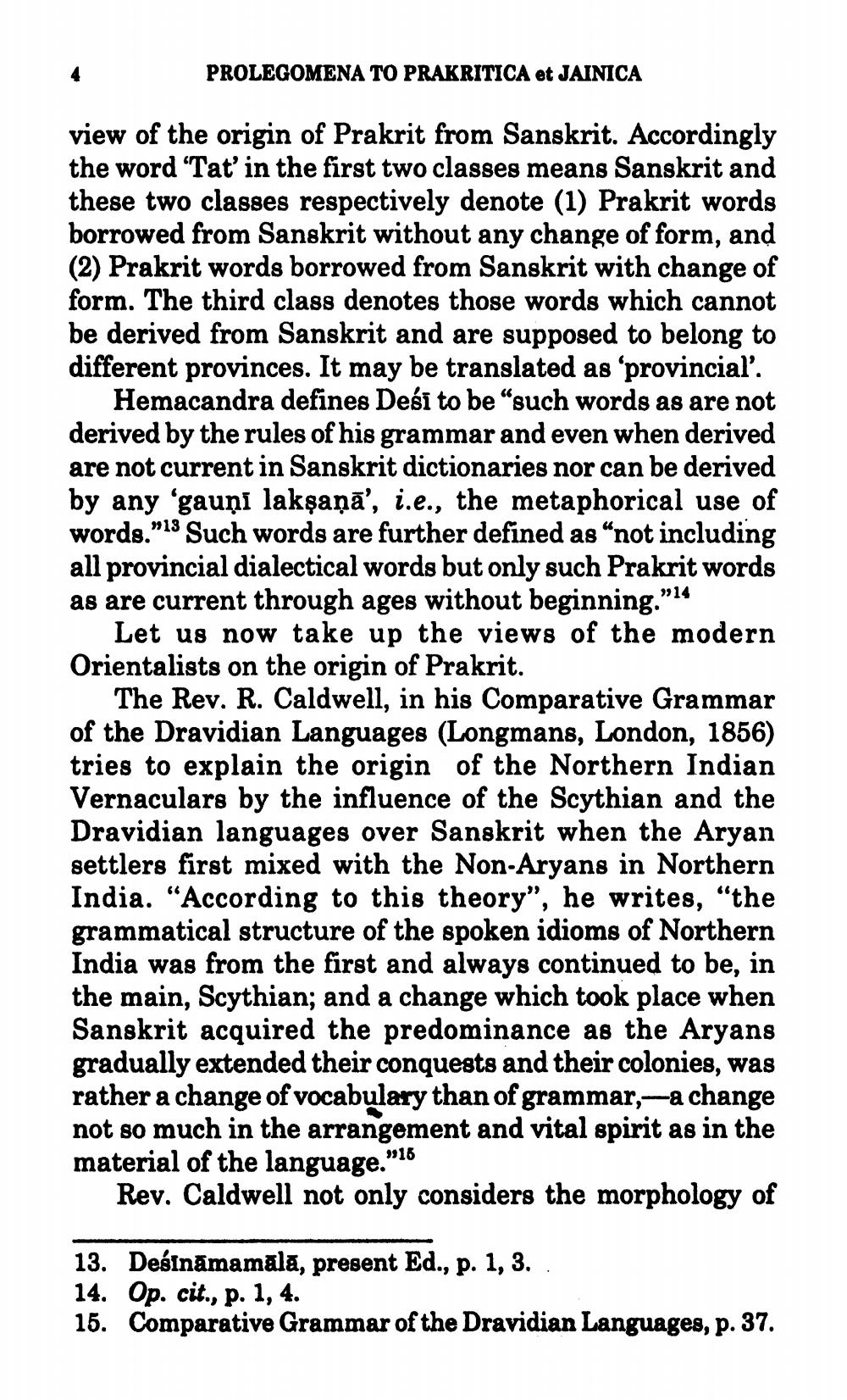________________
PROLEGOMENA TO PRAKRITICA et JAINICA
view of the origin of Prakrit from Sanskrit. Accordingly the word 'Tat' in the first two classes means Sanskrit and these two classes respectively denote (1) Prakrit words borrowed from Sanskrit without any change of form, and (2) Prakrit words borrowed from Sanskrit with change of form. The third class denotes those words which cannot be derived from Sanskrit and are supposed to belong to different provinces. It may be translated as 'provincial'.
Hemacandra defines Deśī to be “such words as are not derived by the rules of his grammar and even when derived are not current in Sanskrit dictionaries nor can be derived by any 'gauņi laksaņā', i.e., the metaphorical use of words."18 Such words are further defined as "not including all provincial dialectical words but only such Prakrit words as are current through ages without beginning."14
Let us now take up the views of the modern Orientalists on the origin of Prakrit.
The Rev. R. Caldwell, in his Comparative Grammar of the Dravidian Languages (Longmans, London, 1856) tries to explain the origin of the Northern Indian Vernaculars by the influence of the Scythian and the Dravidian languages over Sanskrit when the Aryan settlers first mixed with the Non-Aryans in Northern India. "According to this theory”, he writes, “the grammatical structure of the spoken idioms of Northern India was from the first and always continued to be, in the main, Scythian; and a change which took place when Sanskrit acquired the predominance as the Aryans gradually extended their conquests and their colonies, was rather a change of vocabulary than of grammar,--a change not so much in the arrangement and vital spirit as in the material of the language.”16
Rev. Caldwell not only considers the morphology of
13. Dešināmamala, present Ed., p. 1, 3.. 14. Op. cit., p. 1, 4. 15. Comparative Grammar of the Dravidian Languages, p. 37.




